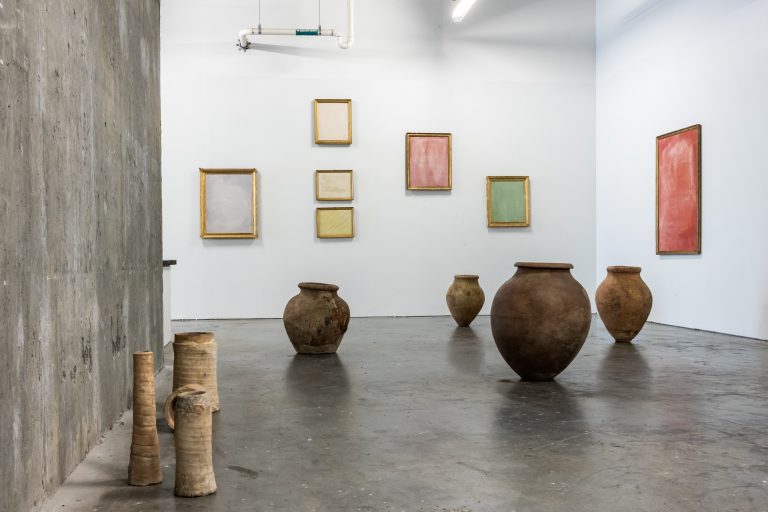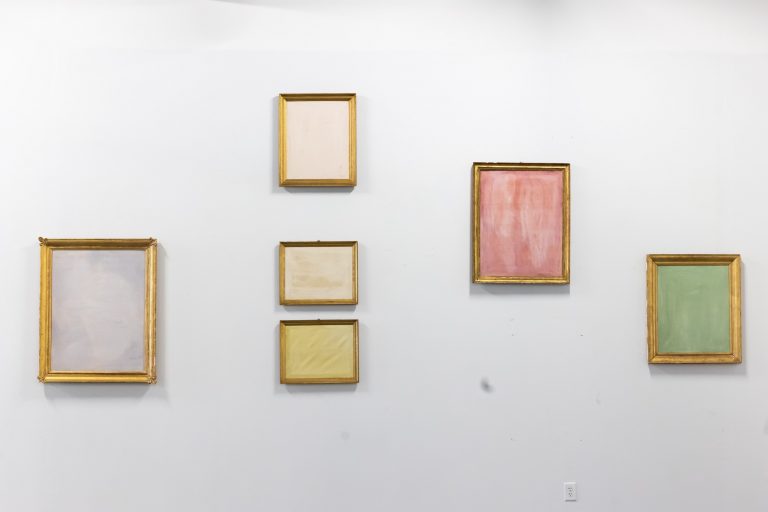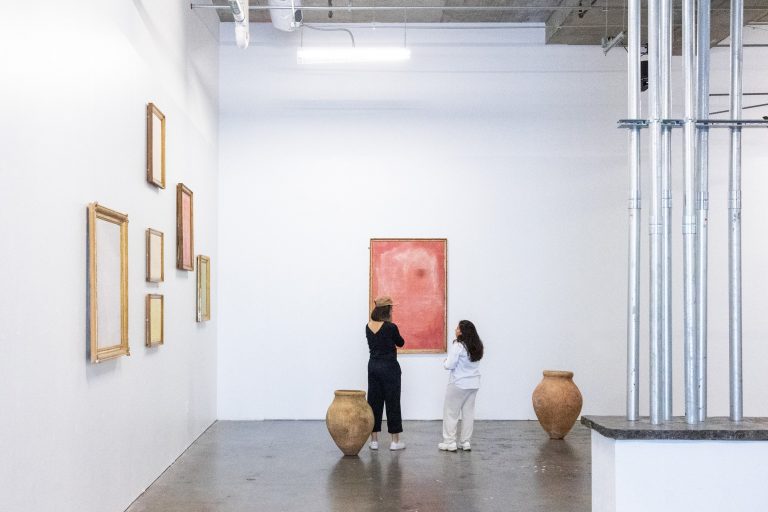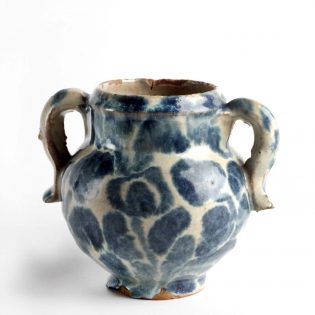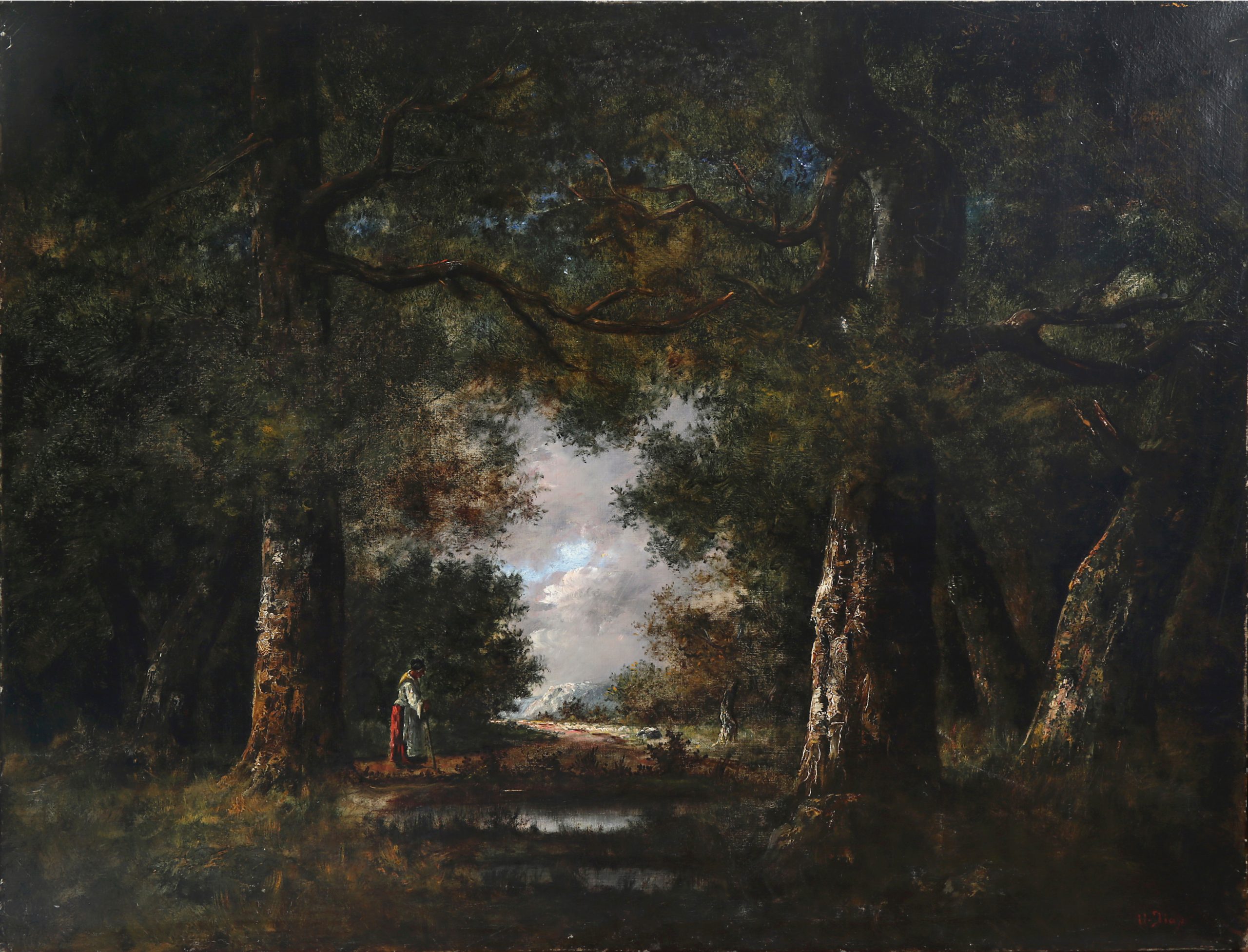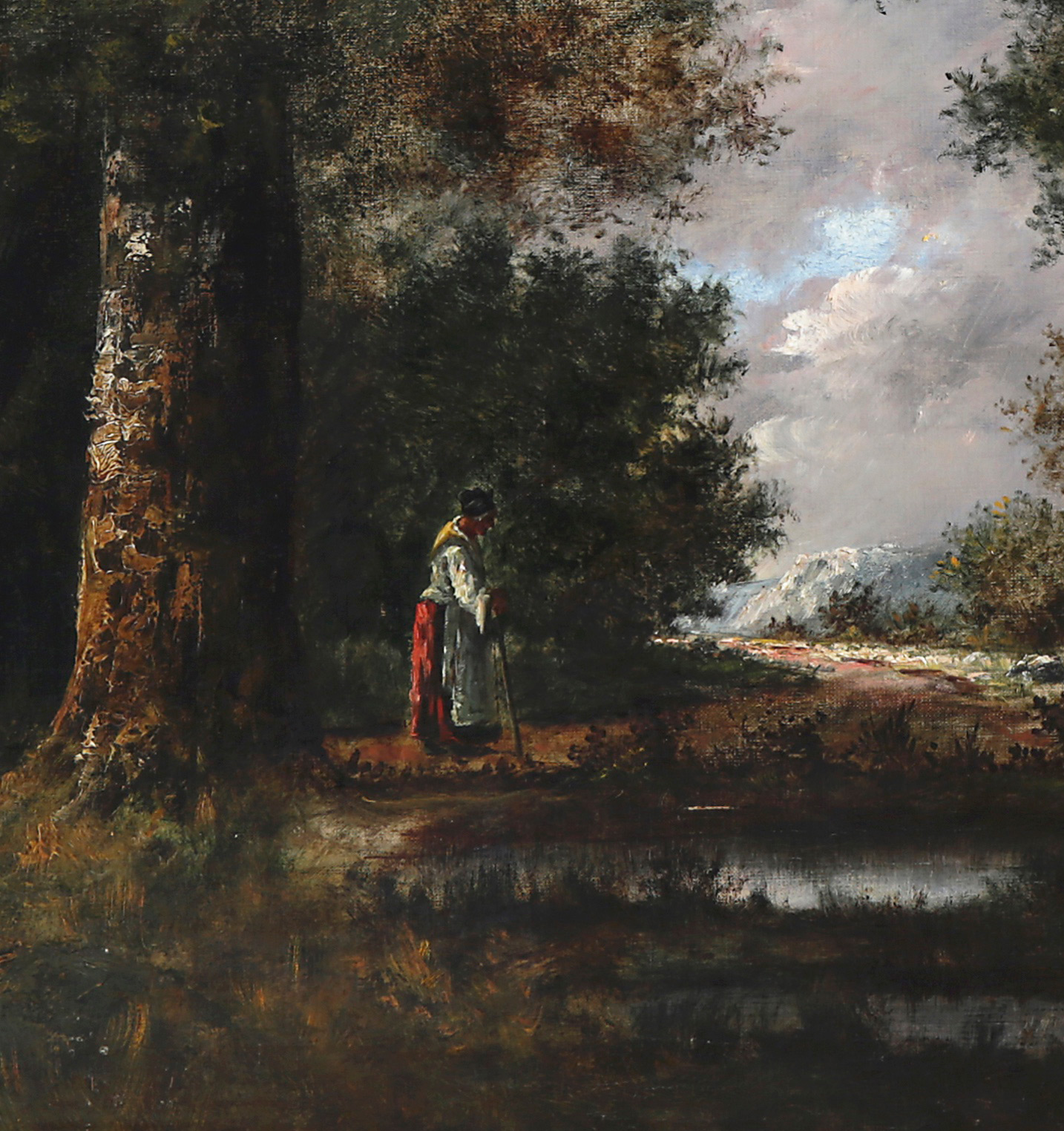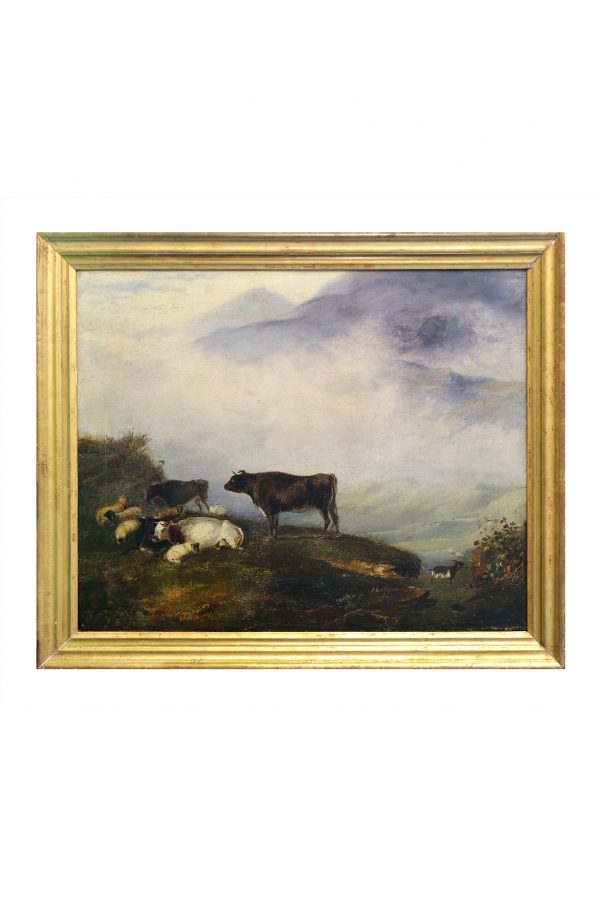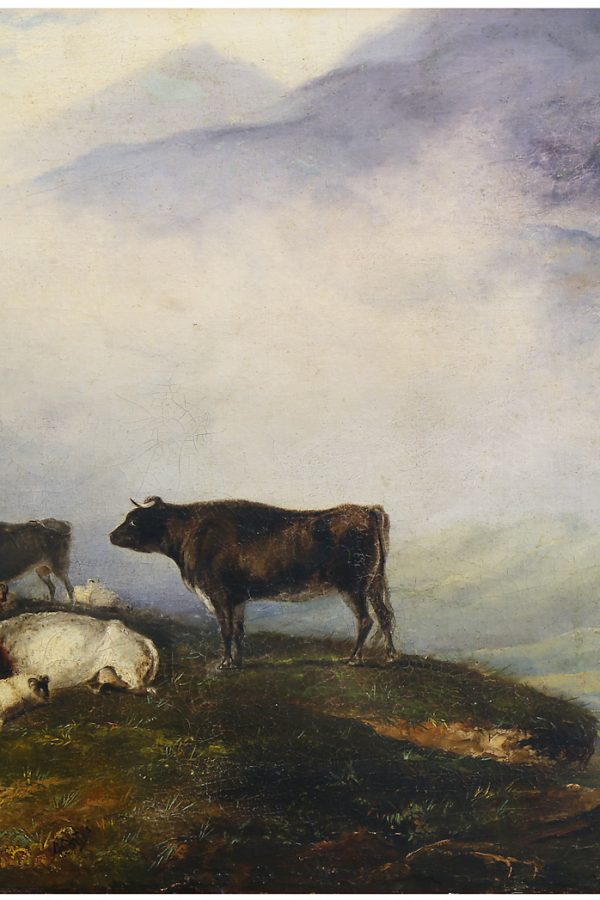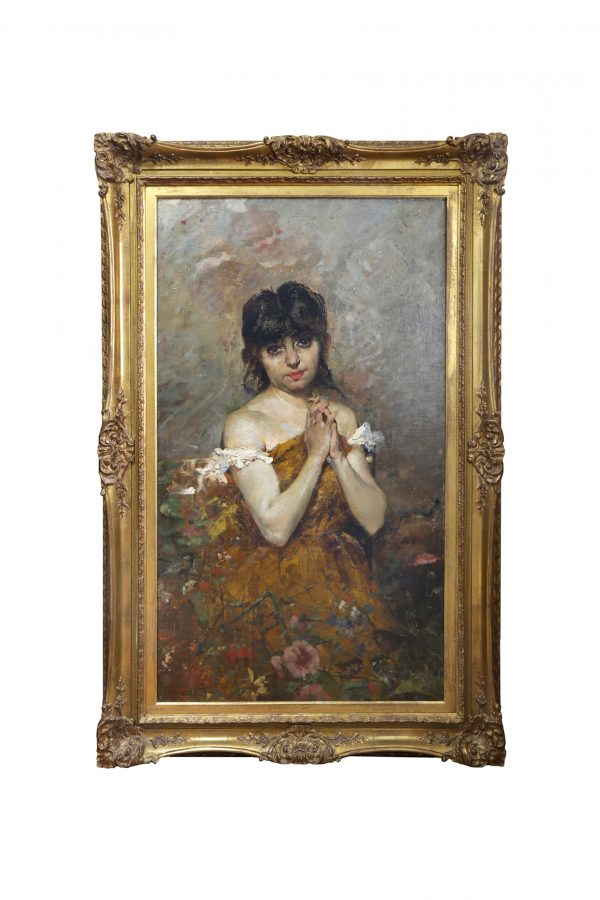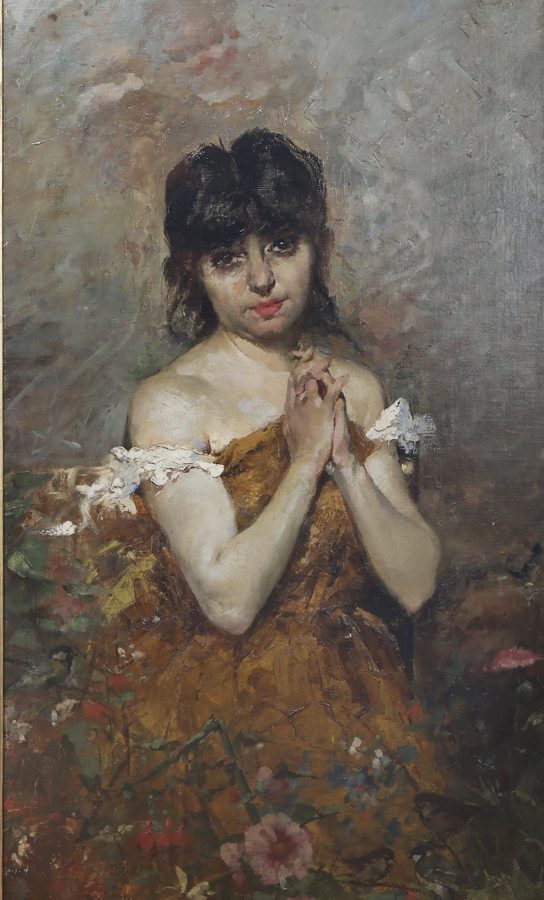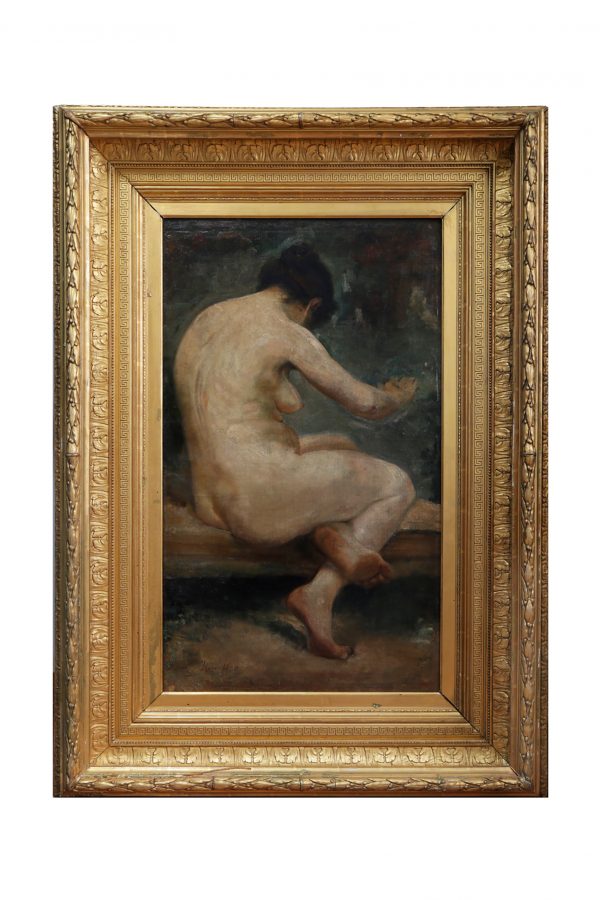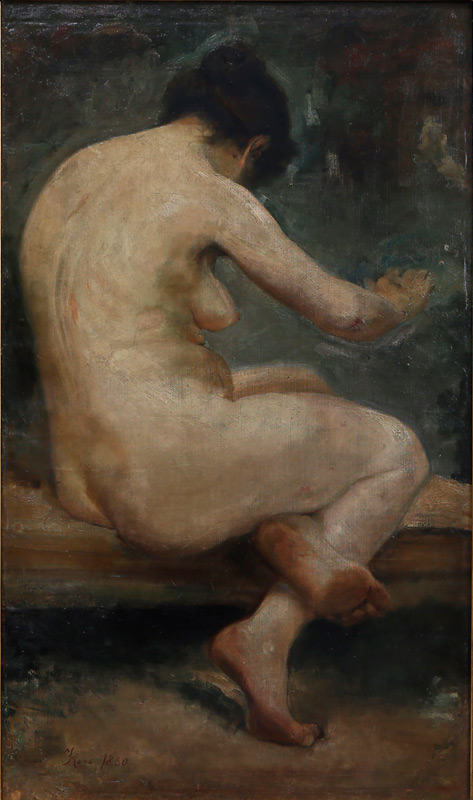Description
Díaz demonstrates in this wooded landscape his magnificent gifts as a colorist; the tones illuminated by the silver light that seeps through the clouds and is reflected in the water, delicate and fresh, emerge from the ocher, green and warm earthy, revealing the magical character of real, everyday nature, far from any idealization . Next to the pond, a brightly
colored spot: the red skirt of a woman walking on a cane, with a white shirt and apron and a yellow shawl that seems to reflect the golden glitters of the treetops.
Díaz’s forests are known as the best of his work; perhaps his greatest defender was Théophile Thoré who, in a review of the Salon of 1846, noted that the artist “does not show us a tree or a figure, but the effect of sunlight on this figure or on that tree.” Two years earlier, Thoré himself had written that “Monsieur Díaz has studied a lot in the most virgin corners of the
Fontainebleau forest … The trees, the terrain, the shadows of his landscapes have a strange and very poetic aspect.” The Bordelés master was especially
admired for his representations of the undergrowth, very often with small ponds in clearings under the canopy of trees. This is just what we see here: the trees, defined by the infinitely nuanced play of light and shadow, as Thoré pointed out, open to show us a clean pond whose mirrored surface reflects the cloudy sky. Through the treetops, which cover the entire upper half of the canvas, we glimpse the intense blue of a sky that, we guess, clears in its high part while the dense clouds swirl towards the horizon, over the snowy mountains.
The composition tends to symmetry, with trees that rise almost vertically on both sides of the pond, axis of the scene that also extends vertically, through color, in the sky visible in the opening of the foliage. On both sides the light fades, skillfully obscured by the wise hand of Diaz, master of the treatment of shadows and half lights. The color vibrates throughout the
scene, the light reverberates and shapes the motifs, accurately reflecting the mutability of nature, the transience of the ephemeral moment immortalized by the brush.
https://www.metmuseum.org/art/diaz-de-la-peña

